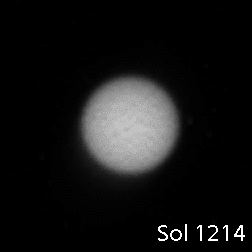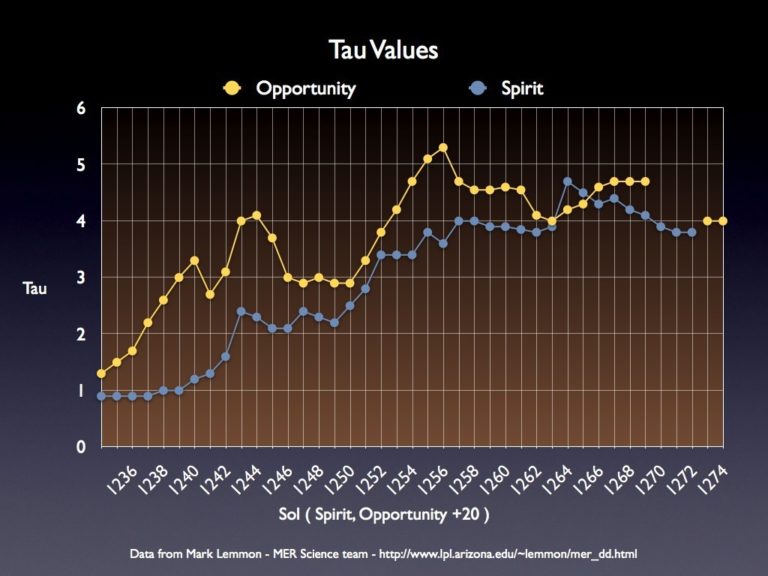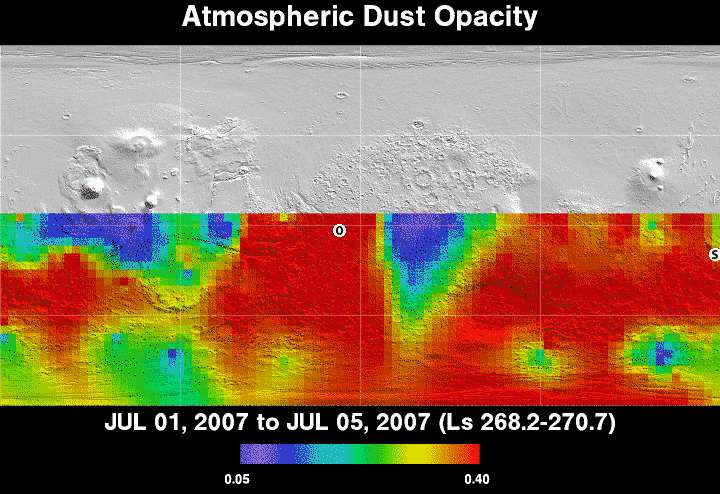Emily Lakdawalla • Jul 27, 2007
Dust storm update: rovers still OK
The dust storm continues at Mars, but both rovers continue to be power-positive. In fact, Opportunity is positive enough on power to have resumed taking measurements of "tau," the atmospheric opacity. The rovers measure the amount of light that passes through the atmosphere by placing a very dark filter over their Pancam "eyes" and taking a photo of the Sun. Lately, those images have been much darker and softer-edged than normal -- it's been awfully hard to see the Sun through all that dust. I asked Jim Bell, Pancam man, if he could give me calibrated versions of some of those Sun images to show you how its appearance has been changing with time for both rovers. I didn't quite have time to finish the work I wanted to do with these before the weekend, but I'll tease you for now with this animation of 23 "tau" frames from Opportunity, beginning on sol 1214. Note there's a big gap in time toward the end, when the sky got so dark that they couldn't even do tau measurements. For most of this animation, the Sun is nearly impossible to see. The images have been enlarged by a factor of 4.

The Spirit record is more continuous; I'll get to those next week, and will also expand the Opportunity animation.
Jim told me that both rovers have been instructed to follow a minimal activity plan over the weekend. "A few taus here and there, but mostly recharge and survive, recharge and survive. No communication with Opportunity until Monday, I believe. Two out of three communication [sessions] kept in for Spirit."
It's fun to compare that animation with the tau measurements being reported by Mark Lemmon. Here's Doug Ellison's graph of Mark's data, updated to sol 1245 for Opportunity and sol 1265 for Spirit. If you look at the graph and watch the animation, you can see the lumps in the graph reflected in dips in the visibility of the Sun in the above animation. I'd like to combine the tau images with a graph to make this more obvious -- another project for next week.

And, for completeness, here's the latest in the dust maps from the Mars Odyssey THEMIS team.

Let’s Go Beyond The Horizon
Every success in space exploration is the result of the community of space enthusiasts, like you, who believe it is important. You can help usher in the next great era of space exploration with your gift today.
Donate Today

 Explore Worlds
Explore Worlds Find Life
Find Life Defend Earth
Defend Earth

